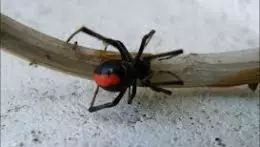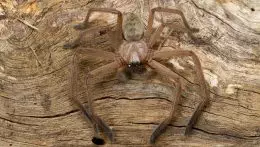
Spiders are known to be among the most common bugs in homes. They are usually attracted to warmth and other insects which act as their primary source of food. Contrary to media reports, a wide variety of spiders are not harmful to man. This is because their venom is weak. There is, however, a small group that is known to be dangerous. With Auckland harboring more than 2500 types of spiders, it is advisable to seek spider removal services whenever they infest your home since you have no idea which one is harmful and which one is not.
Follow Our Simple Treatment Steps
Let Us Do What We Do Best
Our expert technicians will apply the optimum treatment to solve your pest issue.
Enjoy Your Pest Free Home
We send through a post treatment report and you get to breathe easy in your safe and clean home.
Different Spider Species In New Zealand
There is a wide variety of spider species worldwide. Research indicates that the total number of discovered species is over 35,000 with discoveries still ongoing. This means the number is expected to rise further. Auckland, on the other hand, is home to a handful of species. Some of the main types of spiders found in Auckland, New Zealand include:
Katipo
Katipo is a rare type of spider that is known to exist in the beachy areas of New Zealand. It has a pea-size and a visible red stripe on the abdomen. Unlike many spiders, the Katipo is venomous and thus very dangerous to humans. It is, however, a shy spider that only bites when disturbed or squeezed. According to research, only the female is capable of biting a human. The species is said to be very rare.

Redback spider
The redback is also another species that exist in Auckland, New Zealand. The spider can be identified with a red mark on its abdomen, which tends to make it very visible. The females are the most common to come across. People fear them due to their poisonous bite that can be fatal to older adults and young children.

White-tailed spider
The whitetail is a long spider that originates from New Zealand. The spider is known to live in crevices and cracks of your home and only comes out at night. You can easily identify this species by its whitetail. According to reports, the spider has a painful bite that is usually followed by reddening, swelling, and itching of the area. There is, however, no evidence that proves any lasting effects of the bite.

Avondale spider
The Avondale is a large spider that is known for its hairy body. Just like its name suggests, the spider commonly exists in the Avondale region in Auckland, New Zealand. Avondale spider is very popular in the area due to its large size, unique features, and fast movements when disturbed. Despite having a scary look, the spider is completely harmless to humans.

How are spiders dangerous?
Several dangers can be brought about by spiders. These include illness and sometimes death if the bite is not treated on time. That is why seeking spider exterminator services is very crucial. Most people in Auckland get bitten by spiders for disturbing their peace. This can be when cleaning neglected places in homes or clearing out old stuff. For you to avoid spider bites, always wear protective clothing at all times, especially when performing the tasks mentioned above.
How To Recognize Spider Bites
Most spiders are timid and unaggressive. They only bite when they are accidentally squeezed, squashed or disturbed. Sometimes it may be hard to feel the sting while at times it will be evident. So how do you know that you have been bitten by a spider? In most cases, you will experience signs such as fever or sweating, difficulty in breathing, reddening of the area, chest pains, vomiting, cramps in the abdomen and swelling of the area.

Do’s and Don’ts of spider bites
When bitten by a spider, there are steps you can take to minimize the damage the bite can do before heading to the hospital for treatment. Some of the main steps to consider include:- Gently clean the area. You can use either an antiseptic or warm water.
- Once you are through with cleaning, go ahead and place ice on the area.
- Make sure it doesn’t come directly in contact with the skin. You should avoid applying pressure on the bitten area.
- Don’t consume alcohol during that period. Those two will end up increasing the severity of the bite.
Spider webs
Webs are structures that spiders create to trap their prey. The webs are well designed to catch anything that comes in contact with it. At times the spider webs tend to trap the spiders themselves. That is the reason why some spiders have oily feet. This is so that they can avoid getting stuck on the webs. An abandoned web is known as a cobweb.
When to seek professional help?
Sometimes you may find an increased number of spider webs in your home. This may be accompanied by several cases of spider bites making your home uncomfortable to live in. This is when spider control in Auckland comes in handy. Go ahead and hire professionals to get rid of spiders and make your home comfortable and safe again. The professionals will ensure that they clear every spider and spider webs, thus leaving you with a spider-free home.
Our Treatment Process
An external surface treatment is applied in areas where spiders typically crawl e.g. skirting boards, window frames, and the ceiling. The treatment works on residual contact which means the insect will absorb the product after crawling over it. The product then kills the insect by affecting the nervous system. On the internal surfaces, residual product is applied as required.
Leave cobwebs for at least 14 days after treatment so that visiting spiders (i.e. white tails) will come in contact with the product. Webs can then be brushed away with a broom – do not wash away with water. Ensure that any water-blasting is completed prior to our treatment. Wait for 10 days to allow webs to re-establish prior to treatment. Leave any webs in place as we apply product directly to webs, which allows for a more effective treatment. Webs can be brushed off after about 2 weeks – DO NOT WATER-BLAST AFTER TREATMENT. This will remove any residual product.
Dogs must be secured before our technician arrives.
Frequently Asked Questions
There are three species of spiders in New Zealand that should be avoided – the Katipo, the Redback and the White-tailed Spider. While Katipo and Redback are venomous, the White-Tailed Spider is not considered poisonous to humans. However, a White-tail spider bite sometimes transfers bacteria that may cause reactions in some people.
They’re typically brownish in colour with orange to brown banded legs and a distinct cream-white marking on the tip of the tail.
Prevention is best. We recommend a spider treatment that leaves a residual product that kills spiders when they crawl over it.



